Gavia (Eduard) 1/48 Lavochkin La-7
The Lavochkin La-7 was the ultimate wartime design of a line of fighters that began with the LaGG-3 in 1941. The LaGG-3 suffered from a heavy structure due to its designers unfamiliarity with modern aircraft design and the fact that the state of the Soviet aircraft industry forced them to use wood throughout instead of the lighter aluminum structures being developed in the west, and the lack of a engine of suitable power other than the M-105 1,000 h.p. license-built derivative of the Hispano-Suiza 12-Y series. The LaGG-3 was forced into service due to a lack of alternative, and gained the nickname among its pilots of "varnished guaranteed coffin."
The design team was not unaware of the problems of the LaGG-3. The appearance of the Fw-190 on the Eastern Front was enough for them to obtain official permission to explore the possibility of developing a radial-engined fighter, the result of which was the La-5 series which appeared in 1943, with 150% more power than the LaGG-3 and a worthwhile armament of two 20mm cannon. The ultimate development of this series - the La-5FN - was the first Soviet fighter that could really hold its own against the Fw-190 in combat and was superior to the Bf-109G at low altitude; it was widely produced.
While the La-5 could at least confer equality on Soviet pilots, the designers wanted superiority. A more powerful Shvetsov radial was developed, but it was unreliable; there would be no possibility of increasing engine power past the 1,850 h.p. of the ASh-82FN engine used in the La-5FN. Thus, the designers engaged in a program to further lighten the airframe by the substitution of aluminum structures for the main spar and other parts of the design wherever possible, as well as a general cleaning-up of the airframe. The result was the La-7, which first appeared in prototype form in January, 1944. With the airframe gaps sealed, a different propeller, and the engine oil cooler removed from the drag-producing position atop the engine cowling to a neat scoop under the fuselage, the wheel wells covered completely, and a different exhaust cover, maximum speed was increased to 407 m.p.h at 15,000 ft. - over 40 m.p.h. faster than the La-5FN - making the La-7 the fastest of all Soviet fighters to see service during the war. Interestingly, the control stick changed from the spade grip of the La-5 to an American-style stick almost exactly the same as the P-39 Airacobra. It had been originally planned to arm the La-7 with three Berezin B-20 lightweight 20-mm cannon; however, delivery delays required that the majority of the La-7s that saw combat were armed with the two ShVAK 20mm cannon used by the La-5; only 368 3-cannon La-7s were delivered to combat units before the end of the war, compared with more than 3,000 of the 2-cannon variety.
In combat, the standard La-7 was 44 mph faster than the Fw-190 at sea level, was 22 mph faster than the Butcher-bird at 20,000 feet, and outclimbed it at all altitudes below 20,000 ft. The La-7 was more than 2,000 pounds lighter than its German opponent, which translated into maneuverability the Focke-Wulf could not match in close maneuvering combat at any altitude.
The first La-7s to reach an operational unit were delivered in July 1944, to the 176th Guards Fighter Aviation Regiment, of which Ivan Kozhedub - the leading V-VS ace - was deputy commander. Kozhedub would score 17 of his 62 kills in the La-7, including a Me-262 shot down on February 15, 1945.
Between September 15 and October 15, 1944, the 63rd Guards Fighter Aviation Regiment scored 55 victories - 52 Fw-190s and 3 Bf-109Gs - for the loss of only seven La-7s. The new Lavochkin fighter was clearly a winner where it mattered.
The La-7 rapidly disappeared from V-VS service after the war. The aircraft had been developed under the assumption that its combat life would be less than the airframe life; the airframe life was calculated as three years if hangared at all times. The La-7 was completely gone from Soviet service by 1947.
The kit is so easy to assemble that it was an evening's project. This is one of the Gavia original release kits, which are now released by the parent company, Eduard. I painted it over a weekend. I used Tamiya "Sky Blue" for the underside camouflage color, while the upper surface was done using Tamiya "Neutral Grey" for the dark grey color, and Gunze-Sanyo "Grayish Blue" for the lighter Grey. I used Gunze-Sanyo "Shine Red" for the red areas of the nose, which I then masked off before applying the camouflage colors. When all was dry, I gave the model a coat of Future. Given that Ivan Kozhedub was not only the top-scoring Soviet pilot but also the Allied Ace-of-Aces of the Second World War with 62 kills scored between July 1943 when he entered combat during the Battle of Kursk, and the Spring of 1945 - which included his shoot-down of an Me-262, the only Soviet pilot of the war to accomplish this - it was a natural that I would do his airplane. The Eduard decals went down easily, but I found it was a good idea to let them "float" off the sheet before taking it out of the water, and to apply water to the area where the decal is going in order to maneuver it into position easily; the decals are a bit "grabby." They went down nice and tight under a light application of Micro-Sol.
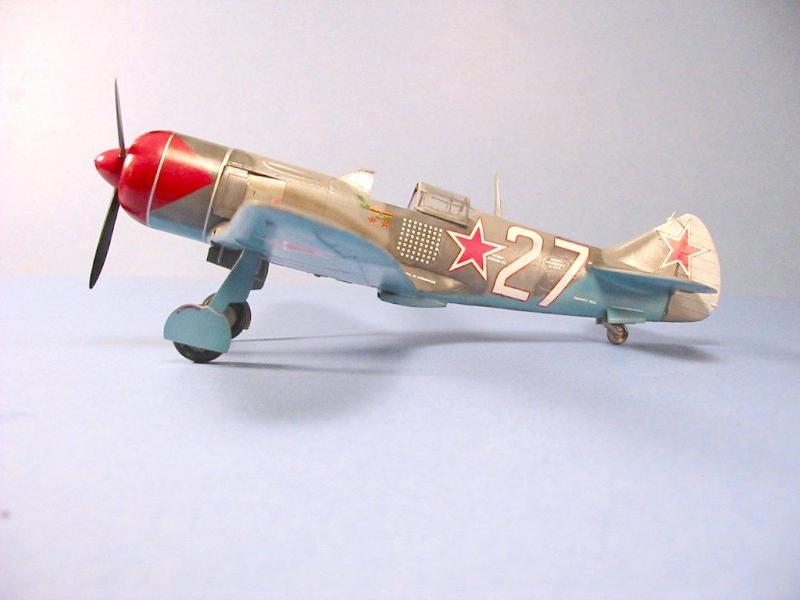
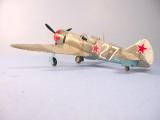
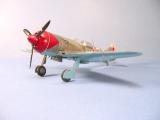
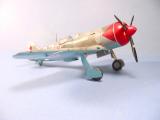
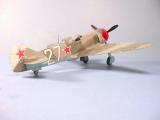
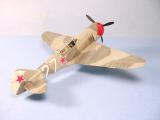
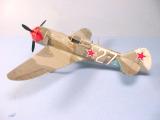
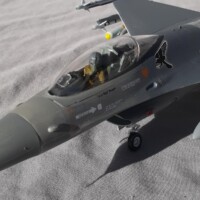
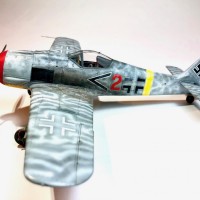
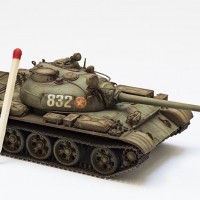
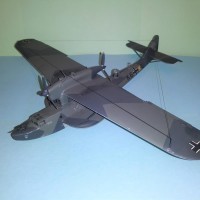
Good history lesson and a nice description of the build, up to your usual standards, Tom.
I agree with George, Tom. Great history lesson that taught me well. One of my favourite parts of this site is the stories that you and others offer. The favourite thing of course is the models! The finished product looks great and the paint finish and decal scheme really make it stand out. Congrats.
Nice one Tom. Found the information airframe life very interesting, I'm guessing that many aircraft produced by the Soviet Union during WW2 had similar limits.
Another Soviet classic. Awesome build Tom. Congrats.
Great article and a great kit as well. good to hear about the quality of this kit.
Excellent photos of a subject that really gets glossed over by folks in the West.Many Soviet designs and aircraft where and are as good as their contemporaries in states and in Europe. The article is frosting on the cake and really helps tie in a story of the a/c type and pilots life story. Ergo its place in history .
Two thumbs up TC on doing the whole package.
Tom,
Great job, great looking model.
Not a kit you see built very often; looks great. Nice subtle weathering.